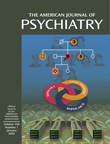Neuroleptic Malignant Syndrome and Quetiapine
Mr. A, a 28-year-old African Caribbean man, was admitted to a psychiatric clinic with a psychotic relapse accompanied by bizarre stereotypic movements, mannerisms, and profuse sweating.Four years earlier, Mr. A had been diagnosed with schizophrenia and had been treated subsequently with haloperidol, fluphenazine, and penfluridol. Seven weeks before his present hospital admission, he had discontinued penfluridol and had started taking alprazolam, 0.5 mg b.i.d., and biperiden, 2 mg b.i.d., because of tardive dyskinesia that affected his head and upper arms. At hospital admission, this medication regimen was terminated. Quetiapine, 25 mg b.i.d., was started on the second day in the hospital and was gradually titrated to 400 mg b.i.d. by day 8. Diazepam, 10 mg b.i.d., was started on day 5 because of severe anxiety. On the seventh day, Mr. A stopped eating and drinking and developed catalepsy. He also became incontinent. On day 9 he became confused, experienced muscle rigidity, and had dry skin and mucosa. His body temperature was 102.6° F, his blood pressure was 150/100 mm Hg, and his heart rate was 120 bpm (his blood pressure at admission had been 130/90 mm Hg and his heart rate had been 88 bpm).The results of laboratory blood tests showed a leukocyte level of 11.4×109/liter; his serum levels were as follows: aspartate aminotransferase: 448 U/liter, alanine aminotransferase: 126 U/liter, lactate dehydrogenase: 2288 U/liter, creatinine phosphokinase: 10,869 U/liter, creatinine: 2.34 mg/dl, urea: 77 mg/dl, sodium: 149 mmol/liter, and C-reactive protein: <0.1 mg/dl. Neuroleptic malignant syndrome was diagnosed in Mr. A, and all medication was discontinued. Mr. A was treated with ice packs, intravenous rehydration, and clonazepam, 3 mg/day. His hyperrigidity subsided within 48 hours. His temperature, pulse, and blood pressure returned to within normal ranges by the fifth day of treatment (during these 5 days, his pulse varied from 90 to 120 bpm). His laboratory measures became normal by day 10 of treatment.
References
Information & Authors
Information
Published In
History
Authors
Metrics & Citations
Metrics
Citations
Export Citations
If you have the appropriate software installed, you can download article citation data to the citation manager of your choice. Simply select your manager software from the list below and click Download.
For more information or tips please see 'Downloading to a citation manager' in the Help menu.
View Options
View options
PDF/EPUB
View PDF/EPUBGet Access
Login options
Already a subscriber? Access your subscription through your login credentials or your institution for full access to this article.
Personal login Institutional Login Open Athens loginNot a subscriber?
PsychiatryOnline subscription options offer access to the DSM-5-TR® library, books, journals, CME, and patient resources. This all-in-one virtual library provides psychiatrists and mental health professionals with key resources for diagnosis, treatment, research, and professional development.
Need more help? PsychiatryOnline Customer Service may be reached by emailing [email protected] or by calling 800-368-5777 (in the U.S.) or 703-907-7322 (outside the U.S.).

